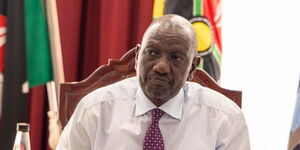Have you ever wondered what happens to your U.S. visa when you leave the States before its expiry? Unbeknownst to many, there are several nuances involving visas which can work for or against an applicant, depending on how compliant one is.
For starters, it is worth noting that leaving the U.S. before your visa expires does not cancel or invalidate your visa. In fact, what matters is whether you have complied with the terms of your stay and exited the country before your last day, as given by immigration officers.
To understand this better, one needs to understand the difference between visa expiration and one's authorised stay, which are two completely different things.
Authorised Stay vs Visa
A U.S. visa, in simple terms, is permission to travel to a port of entry in the United States, such as an airport or land border, to request permission to enter the country. As it is widely known, visas are issued by the U.S. Embassy or consulate after reviewing one's application.
More importantly, it is worth noting that a visa will get you to an entry point of the United States but does not guarantee entry into the country.
The actual decision to allow you into the U.S. and how long you will stay there is solely up to Customs and Border Protection (CBP) officers at the point of entry. This information is typically recorded in your passport or on the electronic form I-94, which states exactly how long you're allowed to stay during the visit.
With this in mind, if your visa is valid for six months but your passport stamp or I-94 stamp says you're allowed to stay for 30 days, you must leave the U.S. before those 30 days are up.
In other words, the visa expiration date does not determine how long you can remain in the country. Instead, it determines the window in which you're allowed to enter the U.S.
Now, what happens if you leave early when your visa allows you to stay longer? As it turns out, it is totally fine as long as you leave before your authorised stay ends. Your visa will remain valid and can be used again, provided it has not expired and it is a multiple-entry visa.
Single vs Multiple Entry Visas
Your visa can be labelled in several different ways. For a single-entry visa, it is indicated with the number 1, while multiple entries are indicated by "M" or a specific number.
A single-entry visa is only valid for one entry, and once you use it to get inside the U.S., it cannot be used again. On the other hand, a multiple-entry visa allows you to enter the U.S. as many times as possible, provided it is within the validity period.
Many non-immigrant visas, such as the B1/B2 visitor visas, are usually issued as multiple-entry visas valid for five years, meaning you can travel to the U.S multiple times for the allowed duration each time without reapplying unless there is a violation of the visa conditions.
There is a caveat, though. Overstaying your authorised period, even for a few hours, under President Donald Trump's new stricter rules, can automatically void your visa and make it harder to obtain another one in the future.
Amid a crackdown on unlawful immigrants, the U.S Immigration Department takes overstays very seriously and in 2025, such infractions can lead to a complete ban from entering the U.S.
Kenyans have been urged to always check their I-94 record if one is unsure about the authorised stay duration. This is the official document that governs one's time in the U.S., not the visa expiration date.
In some special cases, especially for student visas (F or J), the CBP officer may mark "D/S" (Duration of Status) on your I-94 to mean a student can stay in the U.S. as long as they are fulfilling the purpose of the visit, such as attending an approved programme or taking part in classes.












